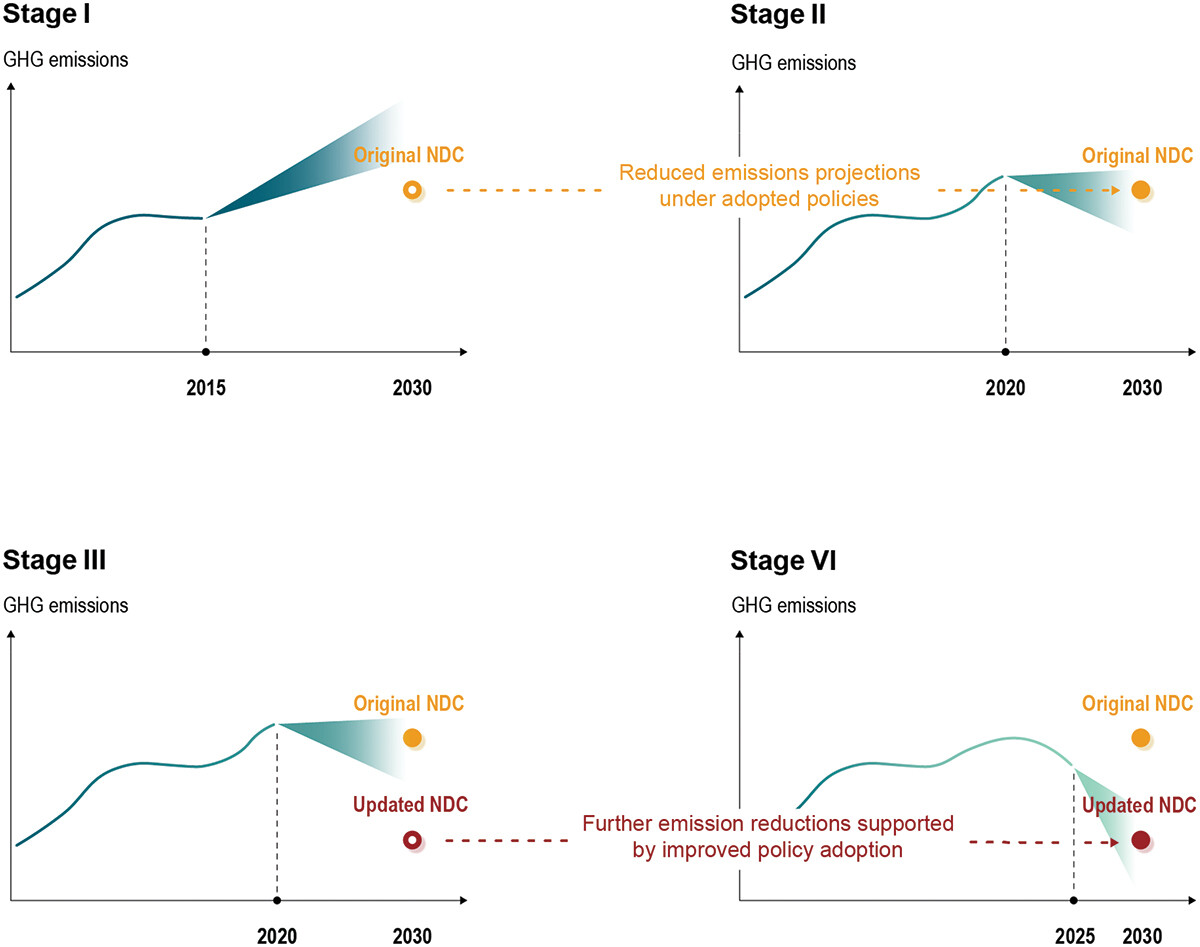The Paris Agreement relies on sequences of NDC ambition raising and adoption of national climate policies. Evaluating NDC ambition progression at the global level shows progress in the right direction but hides important patterns observable at the national level.
Figure 1: Sequencing ambition raising and policy adoption reduces emissions over time.
Most countries analysed need to implement additional policies to meet their NDCs
Out of the 25 countries analysed, 18 are projected to meet their original targets and 11 are projected to meet their updated NDCs. A reduction in the number of countries projected to meet their NDCs results from NDC updates representing a progression compared to the original ones.
More outstanding are the 11 countries projected to meet their updated NDCs at the time they were submitted. In this case, both original and updated NDCs still lead to emissions above current policy emissions projections in 2030. These findings suggest that several NDC updates will have a limited effect on guiding additional mitigation policies.
Under this perspective, updated NDCs fail in their function to bridge current national efforts to meet the long-term goal of the Paris Agreement, since ambitious NDCs guide short-term action and reduce pressure on post-2030 emissions reduction rates.
In almost one-quarter of the countries analysed, ambition raising does not follow sufficient policy adoption
Several countries have not yet adopted policies to meet their original NDCs, which were set over seven years ago. For the Paris Agreement’s ambition-raising mechanism to work, countries need to adopt policies to meet their targets. Increasing the ambition of targets alone widens the credibility gap between international targets and national action and undermines the Paris Agreement. Our results indicate that many countries would need to substantially expand climate policy to meet their own NDCs.
Countries with more national constraints are less likely to sequence ambition raising and policy adoption
Oil- and gas-producing states and countries that currently rely on fossil fuels to support economic growth tend to raise ambitions with limited effect (NDC above current policies) or not raise the ambition of their NDCs at all. This provides empirical evidence supporting the linkages between international and national climate politics and invites better coordination of these processes to ensure NDC ambition is followed by national policy adoption.
Figure 2: Patterns of ambition raising and associated architectures of climate policy constraint.
Countries need to better align international and national goals for the ambition-raising cycle of the Paris Agreement to work. Appropriate sequencing of ambition raising and policy adoption is urgently needed to translate the Paris Agreement into action.









